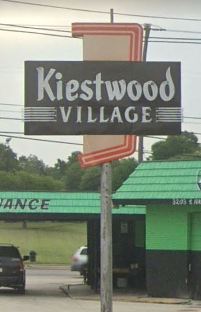Salih’s, Preston Center: 1953-1977
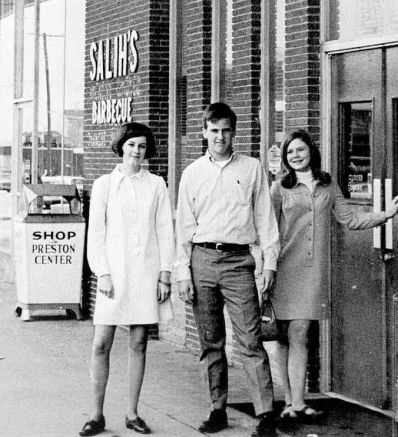 1968, Preston Center (W. T. White yearbook)
1968, Preston Center (W. T. White yearbook)
by Paula Bosse
If you’re reading this, chances are pretty good that you have fond memories of Salih’s Barbecue in Preston Center (or its later incarnation in Addison as “Solly’s”). I have to admit, I had never heard of Salih’s until I started this blog in 2014 (I completely forgot to note the landmark of 10 full years of Flashback Dallas a couple of weeks ago!). But, from what I’ve read, this was an incredibly popular place, and people still rhapsodize about the BBQ, the po’ boys, the fries, the cole slaw, and the potato salad.
So, I’ve read all these memories… but I can find no good photos of the place! There’s the cropped shot of the exterior above and a lot of not-very-helpful shots which appeared in high school yearbooks over the years, taken inside — but they don’t actually show the restaurant! And I understand there was quite a mural in there. I’d love to see a photo of that! Do YOU have any photos of Salih’s in Preston Center? Exterior? Interior? Mural? Please send me whatever images you have. I really want to see them!
*
Salih’s Barbecue was opened by George and Jack Salih on March 20, 1953. The brothers had previously owned a small drive-in and later worked in or managed locations of Lobello’s in Lakewood (2005 Abrams) and Casa Linda (328 Casa Linda Plaza) — either before, during, or after these locations became “Fred’s” BBQ stands (owned by Fred Bell, founder of Kip’s).
That first business, Salih’s Drive-In, was located across from Fair Park at 912 S. Haskell — it opened around 1945. Read George Salih’s memories of serving the “circus people” there in a Feb. 11, 1987 article from the Farmers Branch Times here.
 Aug. 18, 1949
Aug. 18, 1949
After a few years of working for the Lobello family, George and Jack opened their own place at 8309 Westchester, in Preston Center, not far from the original Lobello’s on Northwest Highway. Eventually, Jack moved to East Texas and opened another barbecue place (the Angus Inn in Longview), and George ran the Dallas restaurant. (Click ad to see a larger image.)
An article in the Dallas Morning News describes the new Dallas restaurant thusly:
The restaurant features unique styling in both interior and exterior design. Relief murals decorate the walls inside, while small wooden shutters afford a rustic flavor. The exterior incorporates Roman brick construction, with tall red columns decorated with glass paneling added as a decorative feature. (DMN, March 20, 1953)
It also notes that the Salih brothers were the restaurant’s chefs.
I mentioned this Park Cities landmark in a recent Patreon post, and a kind member described the mural (designed, I believe, by artist Frank J. Boerder):
It was a 3-dimensional cut-out depiction of a cowboy scene, back-lit by a set of red-orange lamps. It ran the length of the south wall of the interior. When you looked at it the scene was in black, back-lit by the lamps. Very striking for a BBQ place. (Plus, the food was very, very good.)
Salih’s is described in the ad above as “a dining area which provides an inviting atmosphere with ultramodern ranch-style design.” I would really like to see this!
Salih’s left Preston Center around 1977, leaving for the then-sparsely populated wilderness of Addison. The restaurant’s name was changed to “Solly’s” (which was either a new name for a new location, a guide for new customers on how to pronounce the Lebanese name, or a sad concession to deal with possible Middle Eastern biases). Solly’s closed in 2004.
*
Below are a lot of ads that appeared in the yearbooks of Highland Park High School and W. T. White High School. I was hoping to see more of the interior but, instead, got lots of photos of kids in paper hats (which I still enjoy!). So here they are!
 SMU Daily Campus, 1956
SMU Daily Campus, 1956
*
 HPHS, 1960
HPHS, 1960
*
 HPHS, 1961
HPHS, 1961
*
 HPHS, 1962
HPHS, 1962
*
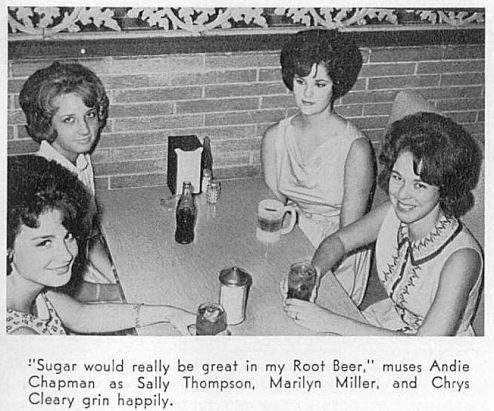 HPHS, 1963
HPHS, 1963
*
 HPHS, 1964
HPHS, 1964
*
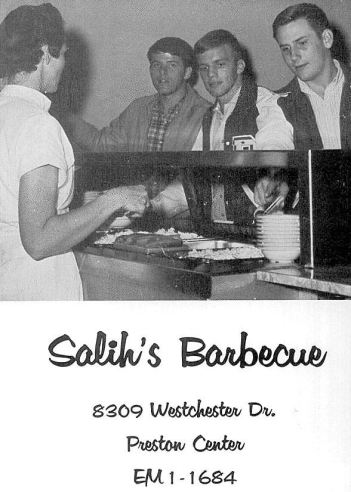 WTW, 1966
WTW, 1966
*
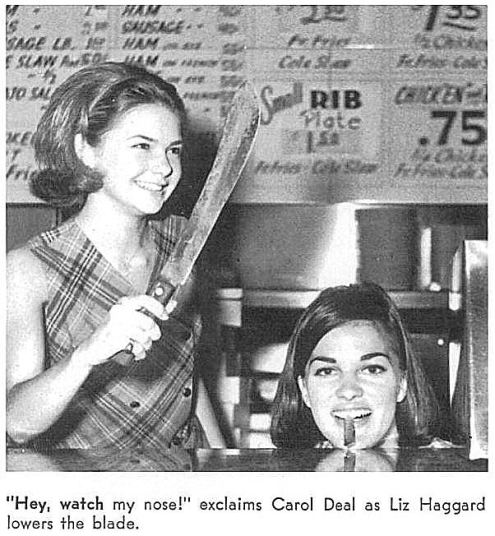 HPHS, 1967
HPHS, 1967
*
Part of the mural over their heads?
 WTW, 1967
WTW, 1967
*
 HPHS, 1968
HPHS, 1968
*
 HPHS, 1969
HPHS, 1969
*
More of the carved mural?
 WTW, 1969
WTW, 1969
*
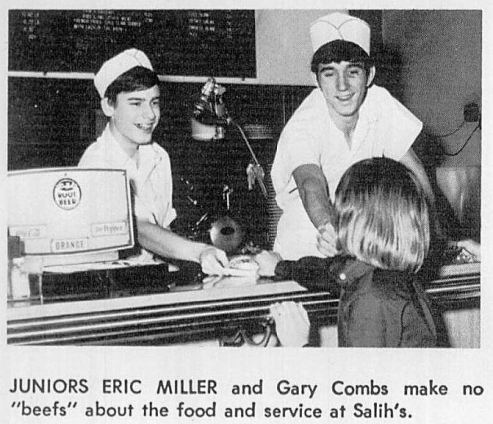 HPHS, 1970
HPHS, 1970
*
 HPHS, 1971
HPHS, 1971
*
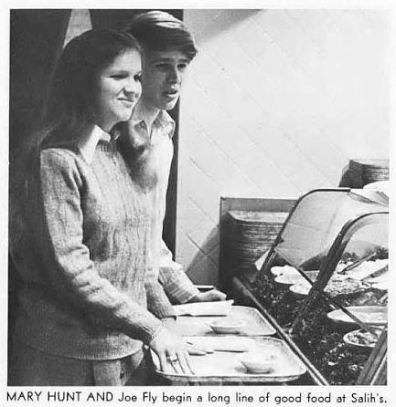 HPHS, 1972
HPHS, 1972
*
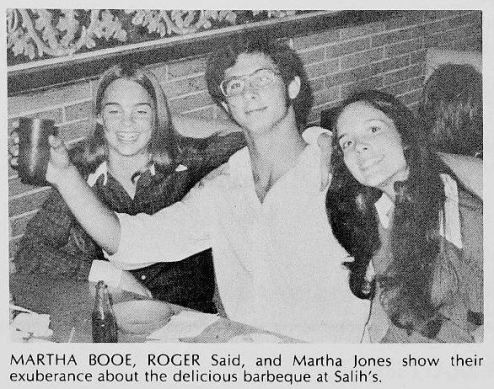 HPHS, 1973
HPHS, 1973
*
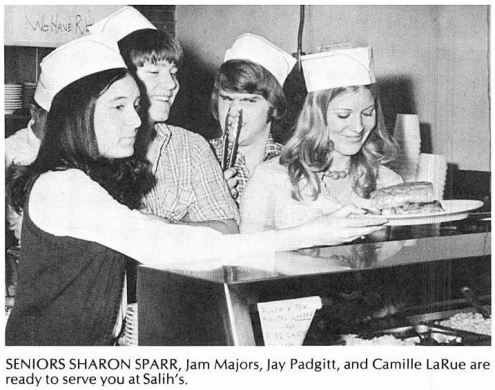 HPHS, 1974
HPHS, 1974
*
 HPHS, 1975
HPHS, 1975
*
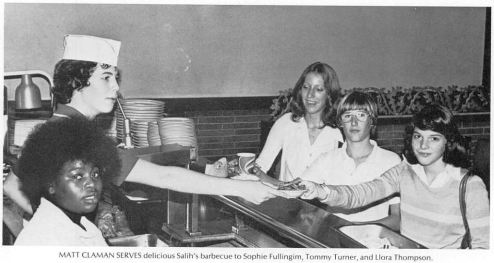 HPHS, 1976
HPHS, 1976
*
And, the last one, from 1977 — could that be a another very, very dark part of the mural at the right?
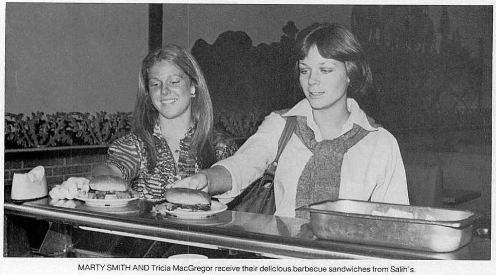 HPHS, 1977
HPHS, 1977
***
Sources and Notes
All sources as noted.
Read the obituary of George Salih here. Read a longer, more colorful obituary in the Dallas Morning News archives (“George Salih — Operated Barbecue Restaurant in Dallas” by Joe Simnacher, DMN, Aug. 14, 2009).
Jack Salih died in Gilmer in Jan. 1991.
![]()
*
Copyright © 2024 Paula Bosse. All Rights Reserved.

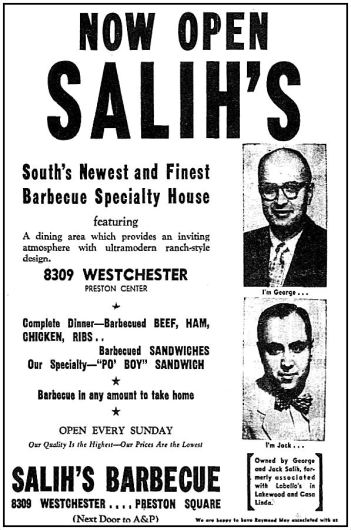





















































 Olive West (1890-1950)
Olive West (1890-1950)




